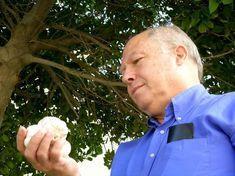
Restoration of fertility to the now-sterile garlic plant has been accomplished by Israeli researchers, thus opening the way to wide-ranging scientific research that will lead to improved yields and quality of garlic.
Garlic, one of the most popular vegetable condiments in the world, has its origin in Central Asia, where in the past, several fertile or semi-fertile garlic plants were identified. However, the cultivated, commercial plants known today are totally sterile and are propagated asexually. The reason for this - as well as the means to restore the plants’ fertility - have remained unknown through the ages.
Now, a team of researchers, headed by professor Haim D Rabinowitch, rector of the Hebrew University of Jerusalem and a researcher at the University’s Robert H Smith Institute of Plant Sciences and Genetics in Agriculture, and Dr Rina Kamenetsky of The Volcani Center, has succeeded in solving this ancient puzzle.
After seven years of intensive study of the morphology and developmental physiology of the plant, the team has unearthed a solution that can only be described as simple.
Rabinowitch said that in its growth process, the garlic plant’s bulbing and flowering occur simultaneously in the spring “when both processes are regulated by temperature and day length”. He added: “During generations of cultivation, farmers selected those plants that displayed early ripening and large bulbs.” The rapid growth of the bulbs drew most of the nutrient and energy resources of the plant, “leaving little for blossoming. This shortage resulted in abortion of the floral bud at a very early stage of development, resulting in complete sterility”, the scientist explained.
In those cases in which the plants succeeded in producing a floral stem, developing flower buds were strangled by the small bulbs at the top that were developing rapidly under conditions of lengthening days.
“Once we understood the conditions that were contributing to the plants’ sterility, we experimented with growing garlic plants under controlled conditions in which temperature and daylight were regulated. In this way, we succeeded in delaying the bulb growth in favour of flowering, regaining fertility and production of seeds,” said Rabinowitch, adding that creating the flowering and seed production now opens up potential for genetic diversity of the garlic plant “which had remained frozen for thousands of years”.
The work by the Israeli scientists has been hailed by experts abroad as “landmark research”. The seeds obtained in the experimental work can now be used in breeding programmes to produce various desired characteristics through the use of classical hybridisation techniques.
“Among the scientific goals are the development of plants that would be resistant to various pests and plant diseases, provide improved yields and quality, adaptability to different climatic conditions, manage adjustable seasonal growth patterns and increase the shelf life of garlic,” Rabinowitch said.



